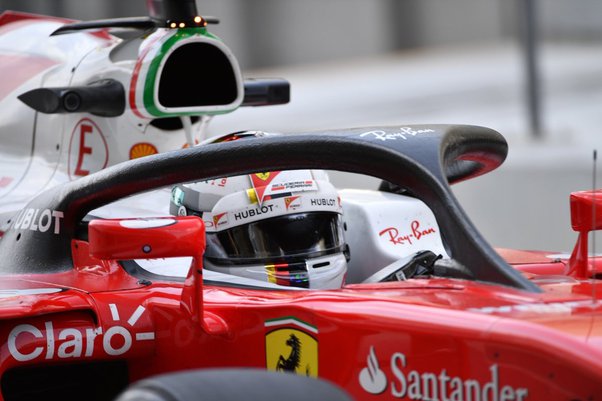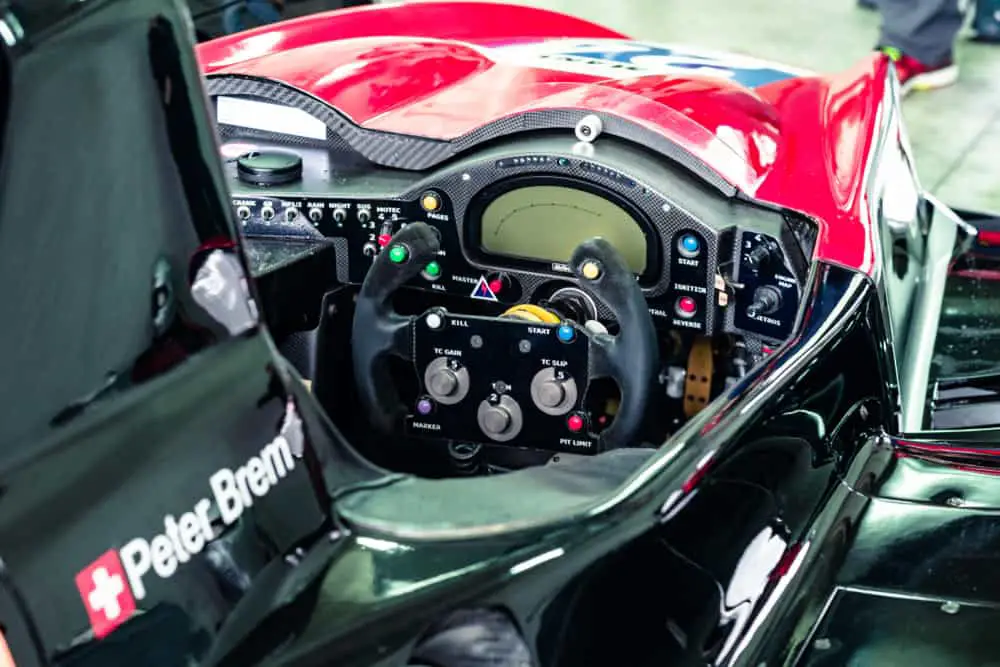Imagine driving a car at over 300 km/h (186 mph) on a scorching hot day. Now imagine doing that while wearing a heavy suit, gloves, boots, helmet, and a seatbelt that restricts your movement and breathing. Now imagine doing that for two hours straight, without any breaks or pauses. How would you feel? Exhausted? Dizzy? Nauseous? In pain?
F1 drivers have to endure temperatures of 60° Celsius (140° Fahrenheit) every time they race. In addition, they face multiple challenges and risks on the track, which are compounded by the stress, high temperatures, and G-Forces F1 drivers have to endure for the length of a whole race.
The cockpit of an F1 car is confined and isolated and has no air conditioning or ventilation. The only openings are the small windows on the sides and the helmet visor. It is surrounded by metal and carbon fiber, which absorb and radiate heat from the engine, the brakes, the exhaust, and the sun.
To ensure that they can meet the challenges and remain super competitive, drivers have to rigidly control their diet and carry out a continuous and punishing physical regime.
F1worldwide.com also Recommends
- F1 Drivers’ Nutrition and Diet: How to Eat Like a Champion
- F1 Driver Training: How to Exercise Like a Champion
- F1 Driver Mental Training: A Crucial Component of Success
The Purpose of the F1 Driver Exercise Routine
So How Hot Is An F1 Cockpit?

The cockpit of an F1 car is a very confined and isolated space, with no air conditioning or ventilation.
The only openings are the small windows on the sides and the helmet visor.
The cockpit is surrounded by metal and carbon fiber, which absorb and radiate heat from the engine, the brakes, the exhaust, and the sun.
The highest temperatures of the various components is listed below.
- The brakes heat up to 1,000° Celsius (1,832° Fahrenheit) when the driver applies heavy braking.
- The F1 engines run at a temperature that ranges between 100° and 120° Celsius (210° – 250° Fahrenheit)
- The gasses in the exhaust system reach up to 2,600° Celsius (4,700° Fahrenheit).
- The outside temperature at circuits in hot climates (such as the Malaysian GP) can rise to 30° Celsius (Air Temp) and 60° Celsius on the track surface. Humidity is high as well (80% average in Malaysia) and rains compound the problem.
These heat sources increase the cockpit temperature to 50° Celsius (122° Fahrenheit) or more during a race. This is comparable to a sauna or a desert.
F1 drivers body temperature may increase to 40° Celsius which is substantially higher than the typical 37° Celsius.
Doctors consider 40° Celsius a very high fever. A typical person will not feel well enough to carry out normal activities. They will feel hot to the touch and may lose their appetite.
How Does This Affect The F1 Driver?
Imagine being in a sauna that is moving at over 300 km/h (186 mph) while wearing a heavy suit, gloves, boots, helmet, and a seatbelt that restricts your movement and breathing.
Now add to that the physical and mental stress of coping with incredibly high G Forces and then
- Competing with other drivers
- Managing the fastest speed down a straight
- Planning the braking point and optimal racing line through a corner.
- Avoiding collisions
- Managing fuel and tires
- Communicating with the team
- Following the FIA F1 rules.
All of this while sweating profusely and losing up to 3 liters (0.8 gallons) of water and electrolytes per race.
If the driver doesn’t manage the heat and his hydration fatigue and impaired mental performance starts to set in, while the driver heart rate also increases. This was displayed in the 1984 Dallas Grand Prix where the temperature was over 40° Celsius. 14 drivers crashed into the wall.
If the driver doesn’t proactively prevent these conditions, they will impair can impair his performance and safety.
There Is Very Little Room In An F1 Cockpit

To make matters worse for F1 drivers, the cars cockpits are not a spacious environment. This means that the driver has very little room to move around and change his position.
In an accident the cockpit is the safety measure of last resort. As such it is one of the primary safety devices. It consists of an exceptionally strong “tub” that withstands incredible impacts.
The regulated dimensions of the cockpit are a minimum of 850mm long and 450mm wide. Hold a ruler across your chest and see how easily you would fit in! It brings a perspective of how little room the drivers have.
How Does the F1 Driver Regulate His Temperature?
The F1 driver has several ways to cope with the heat and maintain his or her optimal body temperature of around 37°C (98.6°F). Here are some of them:
The F1 Driver Drinks Fluids
The driver has a water bottle attached to his or her helmet, which he or she can sip through a tube during the race.
The chill the water or mix it with ice to provide some cooling effect. The driver also drinks plenty of fluids before and after the race to replenish the lost water and electrolytes.
F1 Drivers Wear Special Clothing
F1 drivers wears a fireproof suit made of Nomex. This is a synthetic material that resists heat and flames.
The suit also has layers of air pockets that provide some insulation from the external heat.
Underneath the suit, the driver wears a cooling vest that circulates cold water through tubes around his torso.
They connect the vest to a cooler box in the garage. The driver also wears underwear made of breathable fabric that wicks away sweat and moisture from the skin.
F1 Drivers Use Fans
The driver has a small fan mounted on his or her helmet that blows air into his or her face.
A battery powers it and is placed in the car or in the helmet itself. The fan helps to evaporate sweat and lower the skin temperature.
Some drivers also use fans in their cockpits that direct air to their feet or hands.
F1 Drivers Apply Ice
The driver can apply ice packs or cold towels to his or her neck, forehead, wrists, or other areas where blood vessels are close to the surface.
It helps to cool down the blood and reduce the core temperature. The driver can also use ice sprays or gels that have a similar effect.
Sometimes Other Non-Traditional Methods Are Used
Sometimes F1 drivers think outside the box and try alternative cooling methods.

